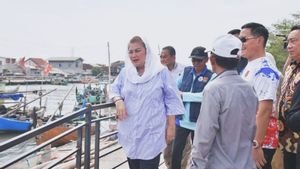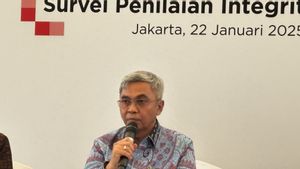JAKARTA - In school, humans are always narrated as social beings. It is said so because humans have a strong urge to interact with others. As the Greek philosopher, Aristotle said: Social beings are zoon politicon, which means that humans are destined to live in society and interact with each other.
In Indonesia, the tradition of gathering is quite sustainable. Each group - including when divided into regions - has their own designation to describe the term kumpul. Among the Betawi people, people call it "kongko."
In the Betawi tradition, kongko is defined as a forum for discussing a variety of topics, from official to casual. The Big Indonesian Dictionary (KBBI) explains the meaning of kongko as an act of meaningless conversation or chatting.
Etymologically, the word kongko in the Betawi Malay dialect comes from the Hokkian Chinese language, the Emwi sub-dialect (Amoy) 講 古 / 讲 古 (read: kóng kó) which literally means telling stories about everything that happened in the past. Therefore, in general, kongko is described as a serious or casual interaction activity related to the past.

Zeffry Alkatiri recorded the history of kongko in the book Jakarta Punya Cara (2012). He explained that the kongko tradition was first popularized by the Chinese-Betawi people long before Indonesia's independence. At that time, Chinese-Betawi people had the habit of gathering with their relatives every evening until late at night on the porch of the house.
“That's when they chat with relatives, friends or neighbors. Apart from that, kongko-kongko were also conducted behind closed doors in a place known only to those who needed them. Such meetings usually discuss important business or kinship matters, ”Zeffry wrote.
Because of the popularity of the kongko tradition, the impact of the kongko has been sustainable in each Chinatown area. Call it like in Pasar Baru, behind Glodok, Taman Sari, Gunung Sahari, and several other places.
“They usually wear nightgowns. They hang out with their legs, while fanning with bamboo fans and eating small snacks, such as peanuts or crackers, interspersed with tea or iced syrup. "
However, the material told is still in the corridors of the past, which generally discuss about their ancestors. Quoted from GJ Nawi in his article Kongko Betawi (2019), the preservation of this tradition lies in kongkowan, which always takes turns telling stories. There are also treats to lubricate conversation, such as cake one, sweets yanwo (swallow nest), tea and coffee or even ciu (wine).
"Then this habit was adapted by the Betawi community by sitting in the bales in front of the house, chatting with friends while accompanied by snacks such as gambang bread, lopis cake, sticky rice urap, and coffee or tea drinks that are not too thick and sweet (nyahi)."
However, the chat was not just limited to past topics, such as Chinese people. Rather, the topic develops and extends to the present to the future. "(Everything) depends on the topic to be discussed. The point is to fill spare time. "
Loaded with benefitsTo get a broader picture of the kongko tradition, we contacted a Betawi cultural observer, Masykur Isnan. For him, kongko is part of the Betawi people gathering activities. Which, for the Betawi people, doing friendship is an important thing and has been done from generation to generation.
In the kongko tradition, the Betawi people understand that the world is like a place that is constructed to maintain friendship. Because of the importance of kongko, gathering activities are not only seen as a means of sharing stories. However, every time you congregate, Betawi people also have emotional and social dependence between one another.
"Kongko is usually done in a simple, fluid way, and without insulation. The kongkowan are so free to say anything depending on the context they want to talk about. That is why kongko is not a traditional form of gathering that only takes up time. Because, kongko can be a productivity and creativity activist, "he told VOI some time ago.
The form of productivity and creativity from kongko was also mentioned again by GJ Nawi in another article in Maen Pukul Book: Khas Betawi Pencak Silat (2016). Therefore, it was revealed that the various Betawi arts, such as Lenong - folk theater - were born through the Rahim of the kongko culture.
"Betawi theater is generally born coincidentally from people who gather (kongko), such as in markets or other places to spend time, entertain themselves, which in the past consisted of various ethnicities," he wrote.
Unfortunately, the habit of kongko is slowly starting to make names become hanging out. Equally, the habit of gathering in the Chinatown area is almost non-existent. The reason is because many of their generations have died or have moved.
Even so, the essence between kongko and hanging out for Betawi people remains the same. Namely, both are proof that humans need the name silahturahmi. In that sense, the frequency of dependence between humans and other humans is very high. Whether it's a matter of emotional or social dependence.
The English, Chinese, Japanese, Arabic, and French versions are automatically generated by the AI. So there may still be inaccuracies in translating, please always see Indonesian as our main language. (system supported by DigitalSiber.id)









